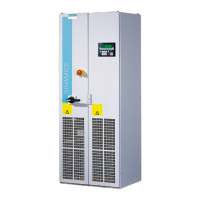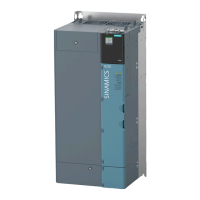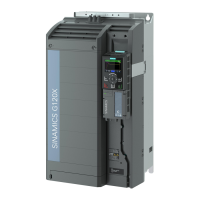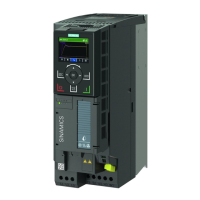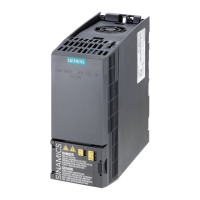Drive functions
7.1 Servo control
Function Manual
Function Manual, 01/2011, 6SL3097-4AB10-0BP3
185
● Control type: Speed control or Position control
● Encoder channel
The pulse/direction interface is assigned an encoder channel. If you are using a motor
encoder, it is always assigned encoder channel 1. This means you need to select
encoder channel 2 for the pulse/direction interface.
● Encoder evaluation
Select the integrated HTL/TTL encoder evaluation of the CU305 as the input for the
pulse/direction interface.
● The pulse number is calculated from the maximum clock frequency of the controller and
the preferred maximum motor speed. The following formula applies:
Pulse number = (max. clock frequency · 60)/max. speed
Example: If the controller has a maximum clock frequency of 100 kHz and the motor
being used is to run at its maximum rated speed of 3000 rpm, the resulting pulse number
will be 2000.
● Select one of the following two options for the Signal shape:
Table 7- 21 Signal shapes for the pulse/direction interface
Signal shape p0405[E].5 Graphic
Pulse/direction
positive logic
1
A and B track
positive logic
0
● The CU305 automatically links the control signals to the specified inputs/outputs (see the
"Wiring control signals" section).
Setpoint value specification via pulse encoder emulation
● For relevant wiring information, refer to the table for "Setpoint value specification:
Encoder signal with TTL level".
● As well making the settings in the commissioning wizard (see above), you also need to
set the following values in the drive's expert list:
– p0405.0 = 1 (bipolar)
– p0405.1 = 1 (TTL)

